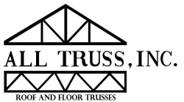LEED Green Building
LEED (Leadership in Energy & Environmental Design) is world’s most widely used green building rating program, and the number of LEED certified buildings is expected to grow at a strong pace. Globally, there are more than 1,400 hotels participating in LEED representing 638.7 million square feet. Of that, there are more than 300 LEED certified hotels comprising nearly 109.2 million square feet of space.
 “Across industries we are seeing an increase in consumer demand toward sustainability practices, and no industry is better poised to meet these demands than hospitality,” said Rick Fedrizzi, CEO and Founding Chair, USGBC. “This growing sector is rapidly adopting green buildings because owners and developers want to enhance their triple bottom line—people, planet and profit. LEED is a transformative tool that positively impacts the quality of our built space by creating a healthier, more sustainable environment that saves money and resources.”
“Across industries we are seeing an increase in consumer demand toward sustainability practices, and no industry is better poised to meet these demands than hospitality,” said Rick Fedrizzi, CEO and Founding Chair, USGBC. “This growing sector is rapidly adopting green buildings because owners and developers want to enhance their triple bottom line—people, planet and profit. LEED is a transformative tool that positively impacts the quality of our built space by creating a healthier, more sustainable environment that saves money and resources.”
Hotels consume natural resources at an extraordinarily high rate as they are occupied 24 hours a day, seven days a week. With more than five billion square feet of space in the United States alone, there is an enormous opportunity for the industry to transform the impact of the built environment.
According to a recent study by McGraw Hill Construction, green construction in the hospitality sector has increased by 50 percent from 2011 to 2013 and now represents 25 percent of all new construction in the sector today. USGBC’s [Find] recent Green Building Economic Impact Study also found that across industries, green construction is outpacing that of traditional construction and is poised to create more than 3.3 million U.S. jobs and $190.3 billion in labor earnings by 2018.


